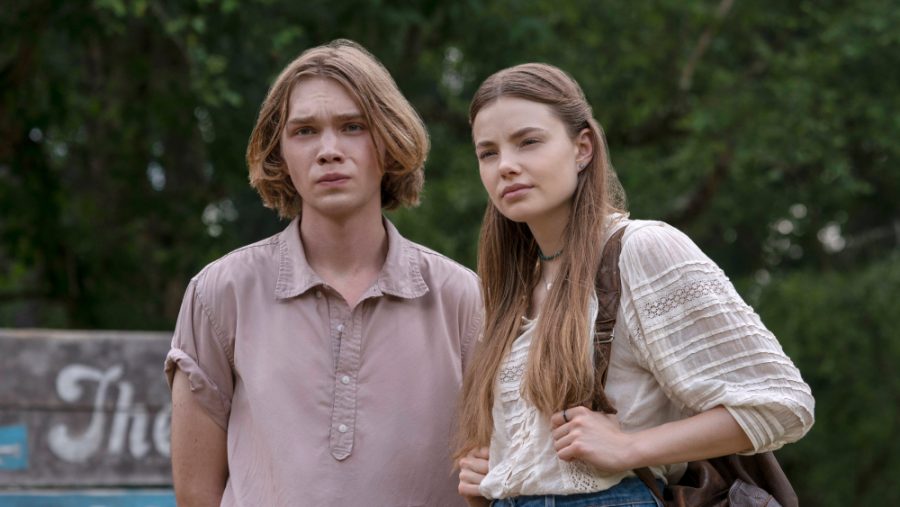REVIEW: Culver Creek is just as you remember it in the Hulu adaptation of ‘Looking for Alaska’
Story loses something due to single-dimensional female archetypes
Courtesy of Hulu
Charlie Plummer as Miles Halter and Kristine Forseth as Alaska Young in Hulu’s “Looking for Alaska.” The show is an adaptation of author John Green’s first published novel.
November 8, 2019
The highly anticipated Hulu series “Looking for Alaska,” based on John Green’s first published novel, was released in full Oct. 18 and has proven to be a great example of a screen adaption that accurately depicts its source material.
But this series made me realize something I didn’t when I first read “Looking for Alaska” at age 14 – the story romanticizes mental illness and writes Alaska Young as just another manic pixie dream girl.
The show follows Miles “Pudge” Halter, played by Charlie Plummer, as he embarks on a journey to seek “a great perhaps” at Culver Creek Preparatory High School, a boarding school in Alabama. There he meets Chip “The Colonel” Martin, played by Denny Love; Alaska Young, played by Kristine Froseth; and Takumi Hikohito, played by Jay Lee – all of whom were at the school on scholarship.
The show is broken up into two parts, before and after, just like the novel itself. In the before, the four friends spend their time together and get into your typical high school antics, while in the after Miles searches for the meaning behind a tragedy that befalls the group.
I fell in love with the novel when I was in high school, and I was almost scared to watch a series based on one of my favorite books because a lot of my favorite books have been ruined by their screen adaptations. “Looking for Alaska” was a shocking adaptation that allowed viewers to immerse themselves in the character’s lives. By making use of eight one-hour-long episodes, the creators gave themselves time to explore themes from the book like intimacy, suffering, mortality and our conscious existence that they couldn’t explore during a two-hour movie.
Green’s other screen adaptations, “Paper Towns” and “The Fault in Our Stars,” were both movies with major scenes from the novels absent from the films. Giving “Looking for Alaska” essentially an extra six hours of screen time really allowed the viewer to connect with the colorful characters. It also allowed for more scenes that viewers craved, like the ‘ultimate prank’ and Takumi’s iconic catchphrase “No one can catch the motherf—ing fox.”
The series was so accurate to the novel that it made me realize that Alaska Young has always been a single-dimensional character that was just placed there for Miles’ growth – a classic manic pixie dream girl.
This is something you can also pick up on by reading the novel, but I read the novel as a high school freshman and didn’t realize the widely sexist archetype that Alaska falls into.
The second Miles lays eyes on Alaska in the first episode, she quickly becomes the only thing he thinks about and he gets the notion that she is his destiny. Most of the series focuses on him trying to get her to love him, while she still has a boyfriend. The second she is separated from her boyfriend, Miles makes his move and they share a single night together. After that night, Miles uses his time with Alaska to progress his character while Alaska remains a mystery to everyone, including Miles despite claiming he loves her so much.
All the scenarios that include the ever-mysterious Alaska Young paint her as a beautiful train-wreck of a person whose entire arc concludes with her leaving behind a love-stricken boy whose character develops while hers doesn’t.
All episodes of “Looking for Alaska” are currently streaming on Hulu.





























































































































